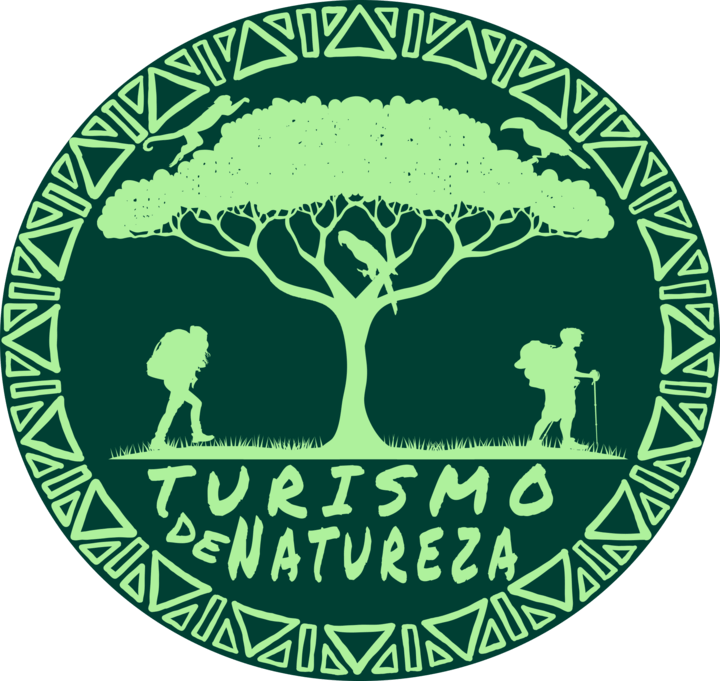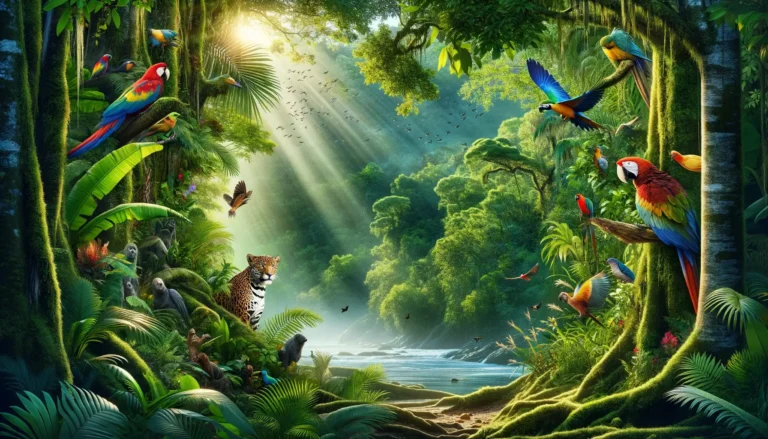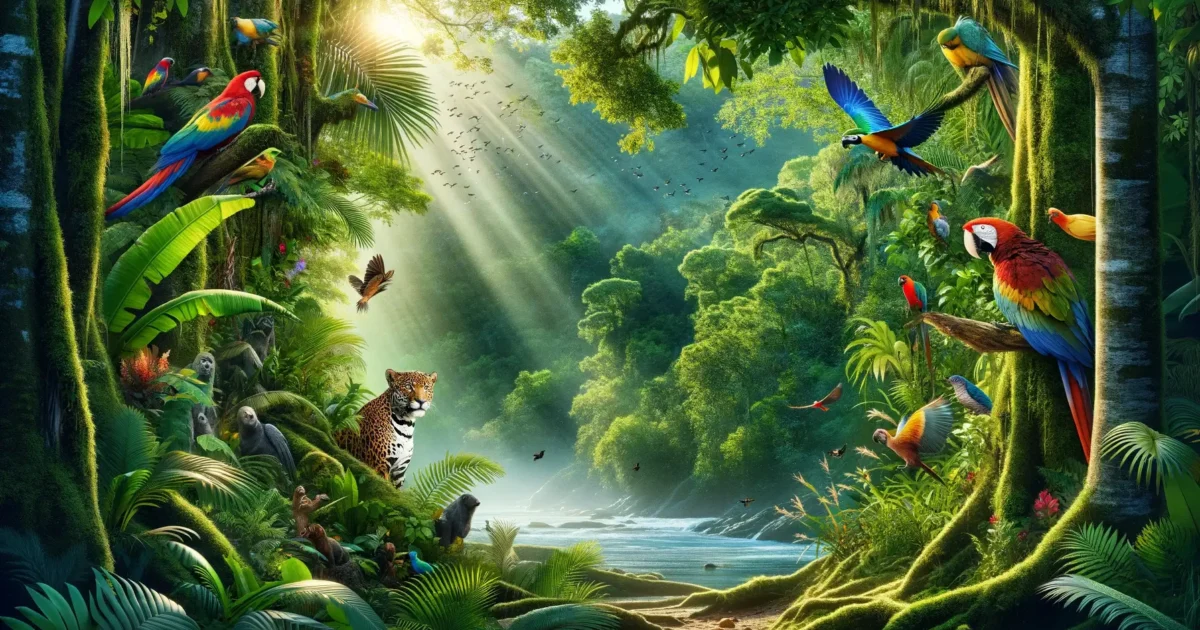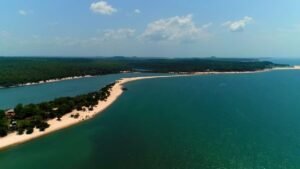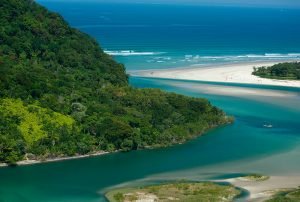What do you know about the Amazon? In this article, explore the most intriguing facts about the Amazon Rainforest. Certainly, you might already know some of these facts, but others will surely surprise you. Doubtful? Then check out our article, crafted with great affection. After all, we are passionate about the Amazon.
Become an expert and uncover the wonders of the world’s largest tropical rainforest, a region that goes far beyond its rich biodiversity.
If you’ve never been to the northern region of our country, you’re undoubtedly missing out on the best Brazil has to offer.
Discover 38 Fascinating Facts About the Amazon Jungle.
1- Most of Brazil’s territory is comprised of the Amazon Rainforest Amazon Rainforest map

About 53% of Brazil is made up of the Amazon biome. Thus, this forest includes all the states in the Northern Region: Acre, Amapá, Amazonas, Pará, Rondônia, Roraima, parts of Tocantins, a section in the Northeast in the state of Maranhão, and other areas in the Midwest states of Mato Grosso and Goiás.
Brazil houses 60% of the Amazon Rainforest, followed by Peru with 13%, with smaller parts in Colombia, Venezuela, Ecuador, Bolivia, Guyana, Suriname, and France (French Guiana).
2 – The Amazon Rainforest is home to about 20% of all the fauna on the Planet

The Amazon Rainforest hosts the world’s largest fauna. Recent research has cataloged over 1,294 species of birds, 427 mammals, 378 reptiles, 3,000 species of fish, 400 amphibians, and over 100,000 invertebrates. However, it is believed that many of them have not yet been cataloged or recorded.
The Amazon is a region that deserves to be preserved, especially if we can increasingly align it with eco-tourism.
3 – Facts About the Amazon Jungle: The Amazon represents more than half of the world’s tropical forests
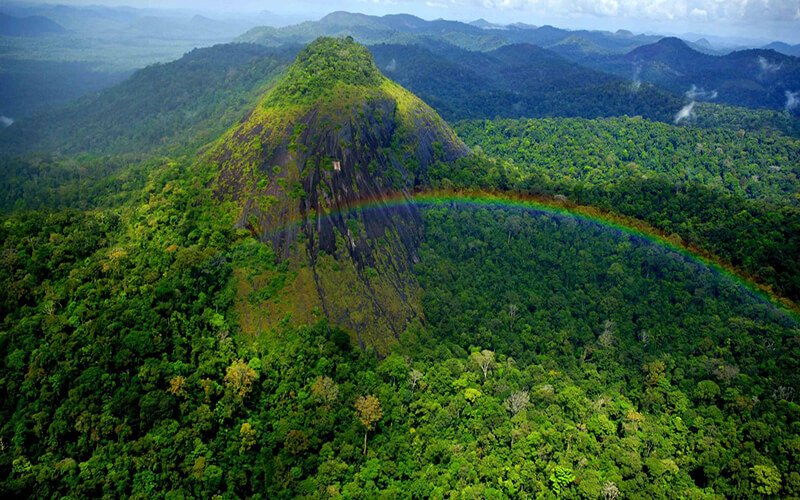
The Amazon comprises more than half of all the world’s tropical forests and covers an area of 5.5 million square kilometers, roughly equivalent to two Argentinas.
4 – It is estimated that 20% of the world’s oxygen is produced by the Amazon Rainforest. Really?
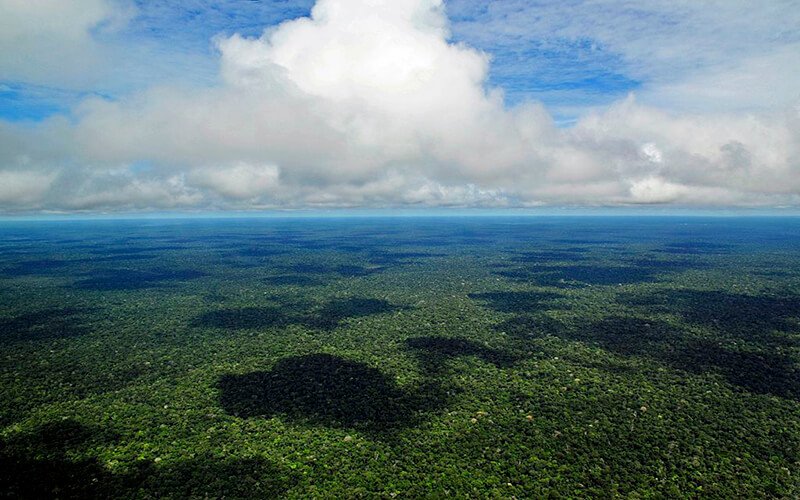
Flying over the Amazon Rainforest. Photo: Neil Palmer/Wikipedia.
The oceans are the real lungs of the world, due to the oxygen production performed by marine algae. Although for many years it was mythologized that the Amazon is the world’s lung, supposedly responsible for producing 20% of the Earth’s oxygen. Many still believe this.
However, even though it is not responsible for 20% of the oxygen, the Amazon flora still impresses as a major oxygen production powerhouse. After all, it hosts approximately 30 million species of plants, with more than 400 billion trees of 16,000 different species. Moreover, the region also contributes to the rainfall supply in South America, known as the “Flying Rivers.”
5 – Largest National Park in Brazil

Tumucumaque Mountains National Park is the largest national park in Brazil and the largest tropical forest national park in the world. It has an area of 3.8 million hectares of Amazon Rainforest, which is larger than Belgium and nearly the size of Switzerland. This conservation unit is located in the states of Amapá and Pará.
6 – Facts About the Amazon Jungle: Largest riverine-maritime archipelago in the world

Marajó or Marajó Island, located in Pará, has the largest riverine-maritime archipelago in the world, that is, the largest archipelago located between the river and the sea. Therefore, many of its beaches are brackish, a mix of fresh and saltwater. Marajó has more than 2,500 islands. Surely a great destination for those who enjoy ecotourism.
7 – Largest Freshwater Archipelago in the World

Mariuá Archipelago, located in the municipality of Barcelos, Amazonas, is the largest freshwater archipelago in the world. It comprises over 1,400 islands, stretching 140 km in length and 20 km in width. This Amazonian archipelago is located within the Jaú National Park.
8 – The Second Largest Waterfall in Brazil
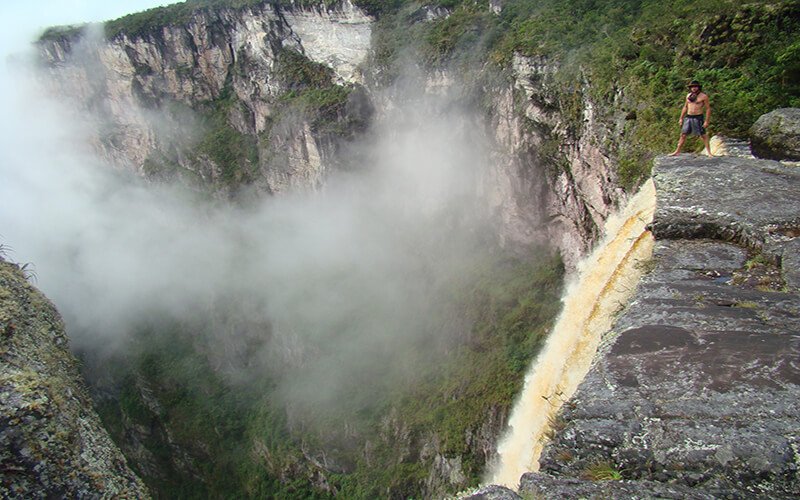
The El Dorado Waterfall is the largest waterfall in Brazil, located in the Serra do Aracá, in the municipality of Barcelos, State of Amazonas. The El Dorado Waterfall, also known as the Aracá Waterfall, has a drop of 353 meters, equivalent to a building of 126 floors. Making this the largest free-fall waterfall in Brazil.
9 – Facts About the Amazon Jungle: The Most Beautiful River Beach in the World

Did you know that in the North of Brazil there is a place known as the Amazon Caribbean? In this region, there are various beaches with white sand and clear waters, the most famous being Love Beach. Voted the most beautiful freshwater beach in the world, as well as having been voted the most beautiful beach in Brazil by the British newspaper The Guardian.
Love Beach is located in Alter do Chão, in the municipality of Santarém, in Pará. The best time to visit is between August and November when the waters recede and the beaches appear.
10 – Fascinating Facts about the Amazon: The largest flat-top mountain in the world

Its beauties, trails, stories, and difficult access make Mount Roraima one of the most coveted places in the world by nature tourism enthusiasts. The mountain is at the triple border of the Amazon region between Brazil, Venezuela, and Guyana. On the Venezuelan side is where the tallest waterfall in the world, Angel Falls, is located.
A unique and mysterious place, the region inspired the writer Conan Doyle, famous for the book “The Lost World”. It was also a source of inspiration for the movie “Up”.
11 – Vitória Régia
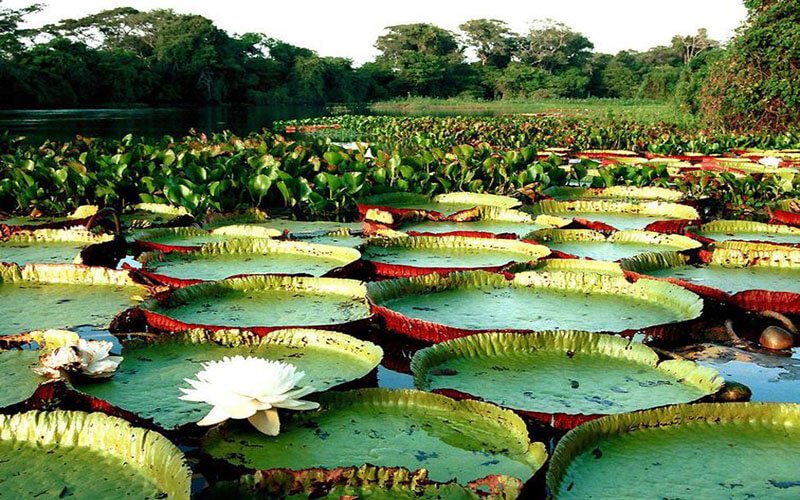
When it comes to fascinating facts about the Amazon, we couldn’t fail to mention the region’s symbol plant. The Victoria Amazonica is an aquatic plant in the shape of a circle. Surprisingly, it can reach up to 2.5 meters in diameter and support up to 40 kilograms if the weight is well distributed on its surface.
The Victoria Amazonica is the largest aquatic plant in the world and produces the largest flower in the Americas.
12 – Largest River in the World

The largest river in the world by length is the Amazon River (6,850 km), although there is controversy among researchers about the Nile River (6,435 km). The river originates in the Peruvian Andes, passes through the states of Acre, Amazonas, and flows into the Atlantic Ocean between the states of Pará and Amapá.
The Amazon River also has the largest water flow in the world, with more than 200 million liters of freshwater dumped into the ocean, about 20% of the flow of the planet’s rivers. Surprisingly, if just 1% of this flow were used, it could supply the Brazilian Northeast and Southeast regions together.
13 – Facts About the Amazon Jungle: The largest freshwater reserve in the world
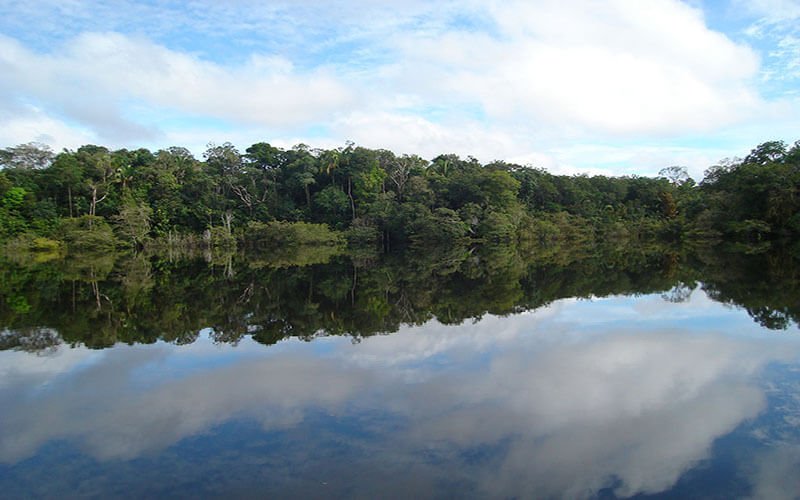
Water is life, and thus the Amazon holds the largest freshwater reserve in the world. This represents one-fifth of all the planet’s potable water reserve and 90% of Brazil’s freshwater.
14 – Amazonian Cuisine

Amazonian Cuisine – Belém do Pará.
With one of the most authentic cuisines on the planet, the diversity and flavors of the Amazon have placed Belém do Pará in a select group of UNESCO Creative Cities of Gastronomy. Furthermore, the city was also voted as having the best cuisine in Brazil by foreign tourists according to surveys by the Ministry of Tourism.
15 – Facts About the Amazon Jungle: Isolated indigenous tribes

There are still isolated indigenous tribes that have never had contact with modern civilizations living in the Amazon. We hope it remains this way, after all, this represents that at least the region they inhabit is being protected and that they can survive from what nature offers.
16 – The largest freshwater fish in the world

The Pirarucu is the largest freshwater fish in the world. Thus, the fish can reach up to 3 meters in length and weigh up to 250 kilograms.
17 – Fascinating Facts about the Amazon: Largest buffalo herd

The largest buffalo herd in Brazil is located in the Amazon, more precisely on Marajó Island, in Pará. There are more than 500,000 buffaloes of 4 different breeds, these animals there are as common as dogs, it is not difficult to find one of them in the streets of their municipalities.
18 – Belle Époque of the Amazon
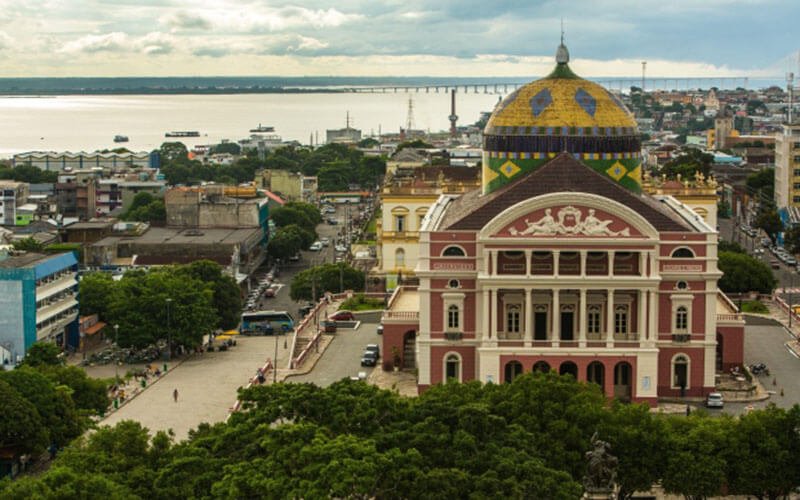
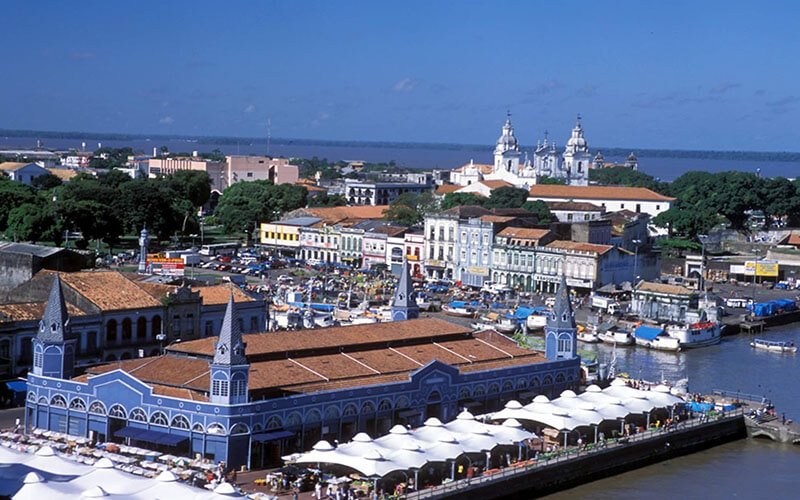
During the rubber cycle (1879-1912), the Amazon was responsible for almost 40% of Brazilian exports, several families and European businessmen had moved to the northern region due to this great business. Mainly to the cities of Belém and Manaus which enriched and modernized greatly during this period. This period became known as the Belle Époque, walking through these cities you will find mansions, small palaces, and palaces inspired by European architecture.
The wealth ended when the English took rubber plant cuttings to Malaysia, still the world leader in natural rubber production today. Above shows 2 constructions brought from the Belle Époque in the Amazon. The Amazon Theatre in Manaus and the Ver-o-Peso Market in Belém.
19 – Fascinating Facts about the Amazon: Amazon’s Stonehenge Amazon’s Stonehenge in Amapá.

The Megalith discovered in 2005, which is a construction of a monument in large blocks of rough stones, became a mystery for researchers around the world. This monument known as the Amazon’s Stonehenge, in allusion to the megalith in England, became an archaeological heritage for research and studies on the indigenous civilization that inhabited that region.
This archaeological site is located in the state of Amapá, 374 km from the capital Macapá. Although research is still trying to find information surrounding the megalith, what they have discovered are anthropomorphic urns (a kind of funerary urn used by indigenous people where they deposit human remains) located near the monument. Additionally, other studies suggest that the rocks could be used for an astrological observatory or calendar.
20 – Fascinating Facts about the Amazon: The most inaccessible city by roads in the world
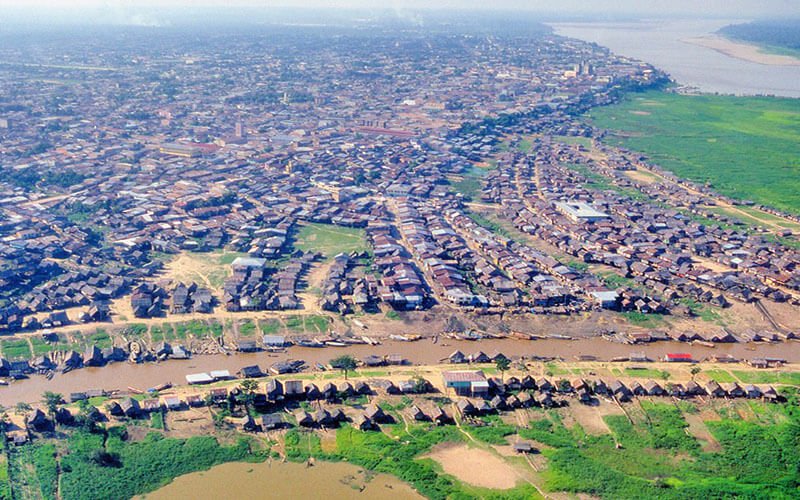
In the Peruvian Amazon, in Iquitos, it is known for being the city with the largest number of inhabitants in the world that cannot be reached by land routes. Therefore, the most inaccessible city by roads in the world, it has approximately 400,000 inhabitants.
21 – Indigenous Territories
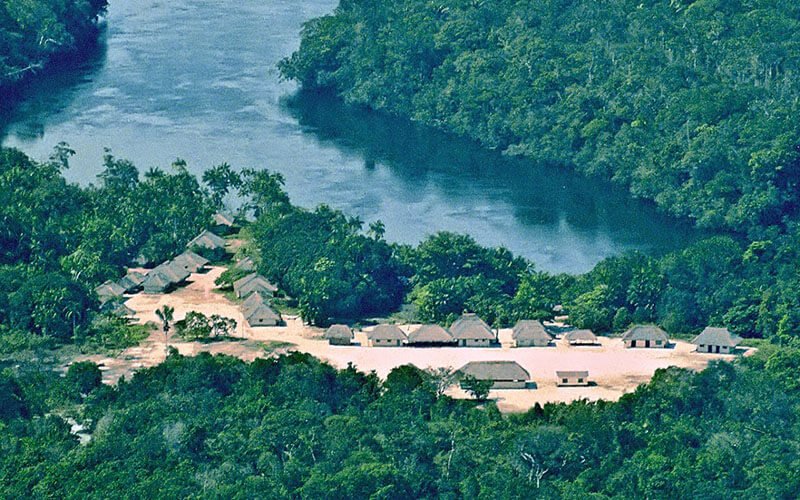
The Brazilian federal government has recognized 690 territories for the indigenous population, which covers about 13% of the Brazilian territory. That is, almost all indigenous lands (98.5%) are located in the Amazon.
22 – Deforestation of the Amazon
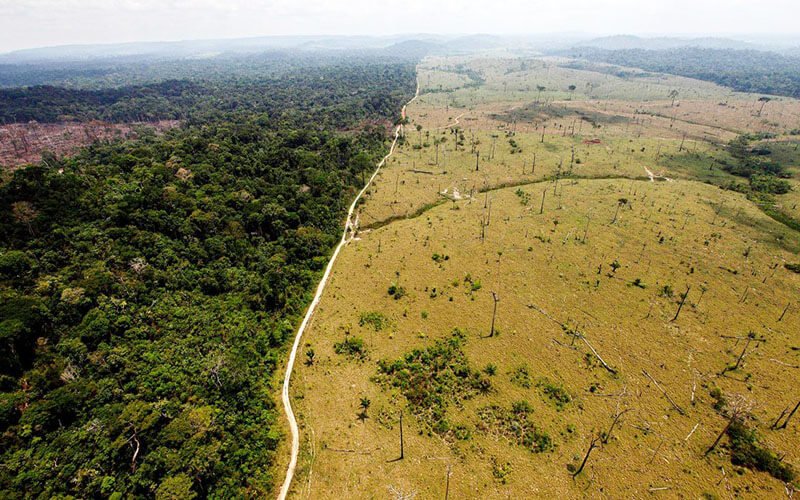
Since the Portuguese arrived in Brazil, from 1550 until 1970, the deforestation of the Amazon did not exceed 1%. On the other hand, in the last 40 years, it is estimated that the forest has lost 18% of its original forest. Sad situation
23 – Meeting of the Waters

The Meeting of the Waters in Manaus (AM), is a hydrological phenomenon that occurs due to the difference in temperature, density, and speed of the Rio Negro and Solimões. Incidentally, the water of the Rio Negro is acidic and poor in nutrients. As a result, only 5% of the fish sold in Manaus come from the Rio Negro, which bathes the city.
The meeting of the waters is a natural phenomenon easily seen in many rivers of the Amazon, therefore not only in Manaus.
24 – Largest Mountain in Brazil

Pico da Neblina is the highest mountain in Brazil with an altitude of about 2995 meters. Located in the State of Amazonas, in the Serra do Imeri, its name comes from the fact that its peak is covered by mist most of the time.
25 – The Pororoca
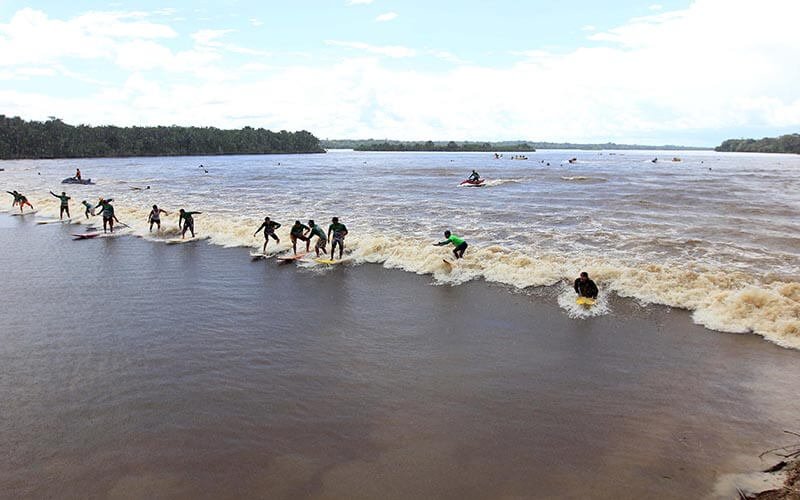
This natural phenomenon occurs due to the meeting of the river waters with the ocean. The term Pororoca comes from Tupi Guarani which means roar. Although it is not yet certain how it originates, what is known is that its formation is influenced by the phases of the moon.
26 – Brazil Nut Tree or Pará Nut

In Brazil, Brazil Nuts are better known as Castanha do Pará, because the State of Pará is the largest producer.
27 – Indigenous art: Marajoara Ceramics

Considered the oldest ceramic art in Brazil and one of the oldest in the Americas. The indigenous civilization of the Amazon that inhabited Marajó Island, in the State of Pará, between 400 and 1400 AD, showed the world through their archaeological sites a rich and sophisticated ceramic art of rare beauty, which was used for ritual, utilitarian, and decorative objects.
Certainly, one of the most beautiful crafts in the world. Even more appreciated outside the country.
28 – Facts About the Amazon Jungle: Fascinating Facts about the Amazon: The largest folkloric festival in Brazil
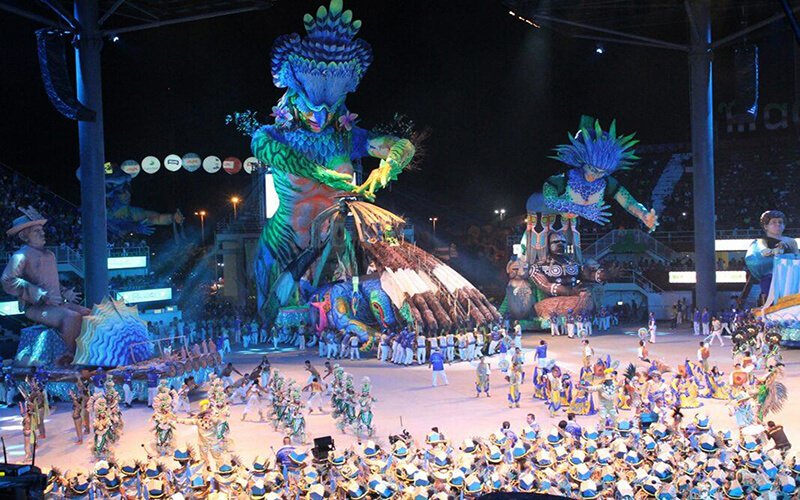
An open-air spectacle that looks more like a giant opera, such is the festival of Parintins, in the municipality of the same name in Amazonas. This beautiful folkloric celebration that worships the Amazon nature, is contested by 2 groups: Boi Garantido (symbol of the color red) and Boi Caprichoso (symbol of the color blue). The winner is the one who makes the best presentation. Undoubtedly a spectacle worth experiencing.
29 – Amazonian Geoglyphs

Little is known about the Amazonian geoglyphs found in Acre. Their first discovery occurred in 1977. However, due to deforestation, currently about 500 have been cataloged in the State. Some researchers suggest that the designs were used with the intention of spiritual and ritual communication with nature.
The designs formed in the ground present different shapes, such as squares, circles, ellipses, and octagons. It is believed that they were produced between the years 3000 BC and 1000 AD.
30 – Demographic Density of the Amazon
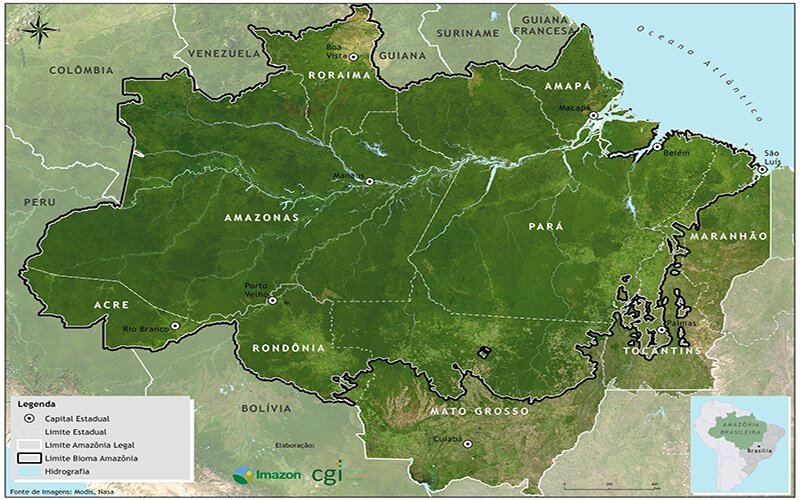
Did you know that just over 12.32% of the Brazilian population lives in the Amazon? Despite being the largest region in Brazil, it has the smallest population. In summary, 62% of the population lives in urban areas and 38% in rural areas.
31 – Círio de Nazaré
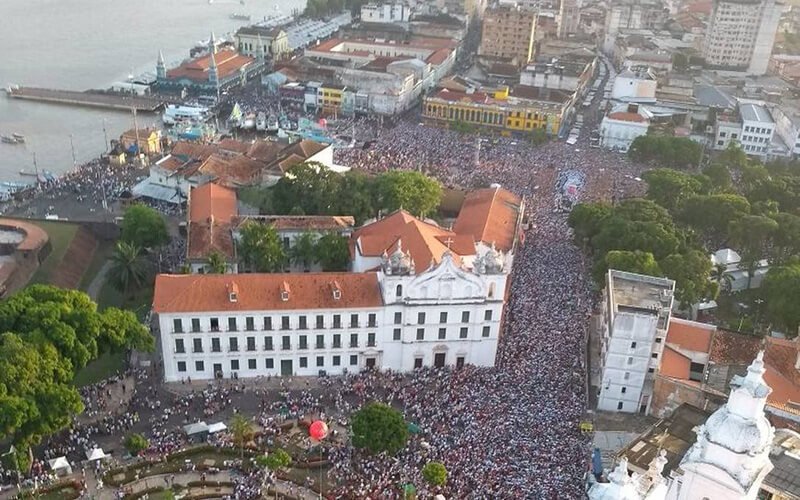
The Círio de Nazaré in Belém do Pará hosts the largest Catholic procession in the world, gathering more than 2 million people. The Patron Saint Our Lady of Nazaré, also known as Queen of the Amazon.
32 – Fascinating Facts about the Amazon: Fortaleza de São José de Macapá

The Fortaleza de São José de Macapá, which is a National Historical and Artistic Heritage (Iphan), is the largest fortress in Latin America. Located in the capital of Amapá, Macapá, the fortress was built on the banks of the Amazon River and took 18 years to complete.
33 -Facts About the Amazon Jungle: Pets of the indigenous tribes

Many indigenous tribes still live in complete harmony with the Amazon jungle, with many Indians adopting various wild animals as pets. In some tribes, it is even common for indigenous women to breastfeed small monkey cubs.
34 – Girassóis Square (Praça dos Girassóis)
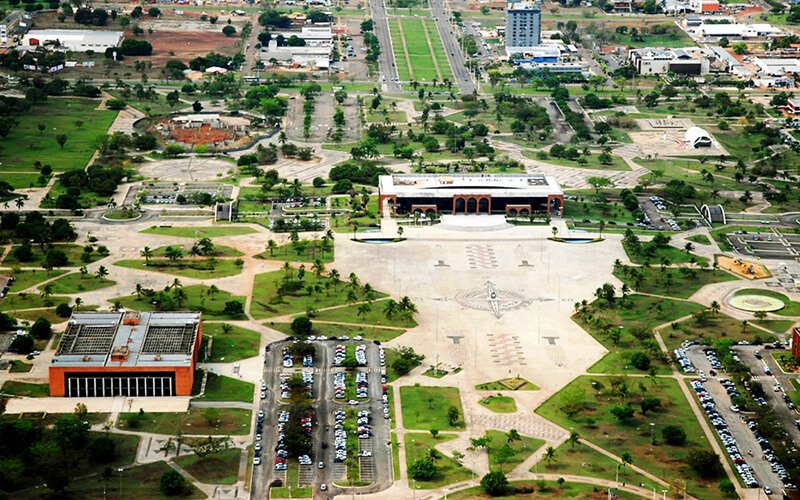
The Girassóis Square located in Palmas, the capital of Tocantins, is the largest square in Latin America and the second largest urban square in the world. The square is an architectural complex that houses the headquarters of the three state public powers, as well as functioning as a leisure area.
The structure of the Girassóis Square has dozens of monuments and works of art that pay homage to the people of Tocantins and help tell their story. The square’s floor displays panels that remind us of the indigenous ethnicities of Tocantins, represented by the Apinajé, Krahô, Xerente, Karajá, Javaé, and Xambioá peoples, as a way to honor the region’s first inhabitants. Certainly one of the most beautiful squares in Brazil.
35 – The largest Eagle in the world

The harpy eagle, also known as the royal hawk, is the largest eagle in the world, as well as the most powerful. It has a wingspan of 2.5 meters and weighs up to 12 kg. The harpy eagle inhabits the Amazon region and some small stretches of the Atlantic Forest. Unfortunately, this beautiful bird is threatened with extinction.
36 – Facts About the Amazon Jungle: Fascinating Facts about the Amazon: The smallest Monkey in the World

The pygmy marmoset, also called the lion tamarin, is the smallest monkey species in the world that lives in the tropical forests of the Amazon basin. Weighing just 100 grams on average, this little monkey is only 15 centimeters long (excluding another 15 centimeters of its tail).
37 – Largest Incidences of Lightning in the World

The Amazon region has the highest concentration of lightning in the world. The warm climate and geographical location favor the formation of storms and lightning. As a result, about 30 million lightning strikes occur in the region each year.
38- The Sahara Desert in the Amazon
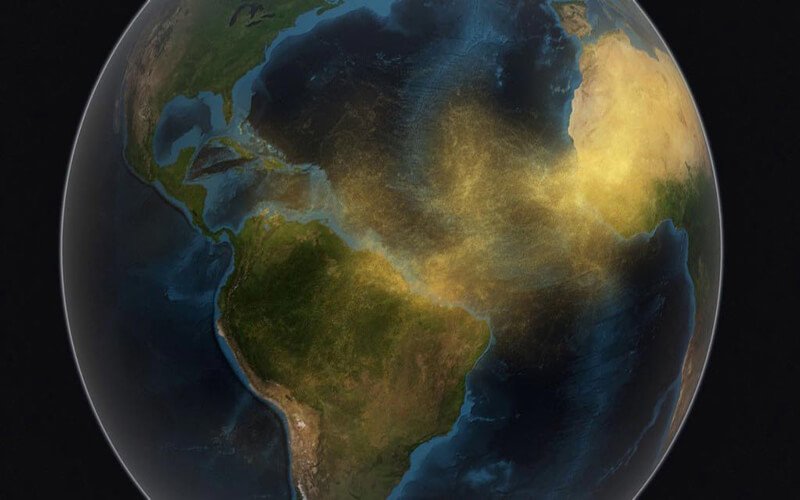
Finally, we come to our list of fascinating facts about the Amazon. But what does the Sahara Desert have to do with it? It seems hard to imagine, but the desert feeds the Amazon through the fertilization of its sands, as concluded by a study conducted by NASA.
These 2 distinct regions are interconnected through a “dust river” that travels 16,000 km through the atmosphere. Each year, strong gusts of wind from the Sahara Desert carry huge clouds of dust on a transatlantic journey to the Amazon. This dust is rich in phosphorus, as its composition comes from the bed of Lake Chad, which contains the remains of organisms that died thousands of years ago.
The amount of nutrients brought by these phosphorus-rich sands is what helps in the fertilization and growth of plants, once it does not tend to be so abundant in the Amazon forest.
Final Considerations
In summary, the Amazon is not only the heart of Brazil but a vital organ for the entire planet. Its unparalleled biodiversity, extensive freshwater reserves, and cultural richness make it an invaluable treasure trove of natural resources and wisdom. Preserving this unique ecosystem is essential, not only for the flora and fauna that inhabit it but for humanity as a whole.
The Amazon’s influence stretches far beyond its geographical boundaries, impacting global climate, oxygen levels, and even the hydrological cycles of South America. It is our responsibility to safeguard this natural heritage, ensuring it continues to thrive for generations to come.
Also, explore the curiosities of other biomes present in Brazil:
